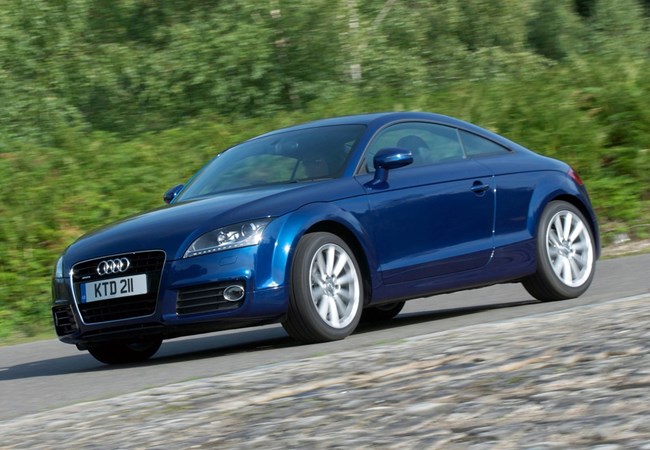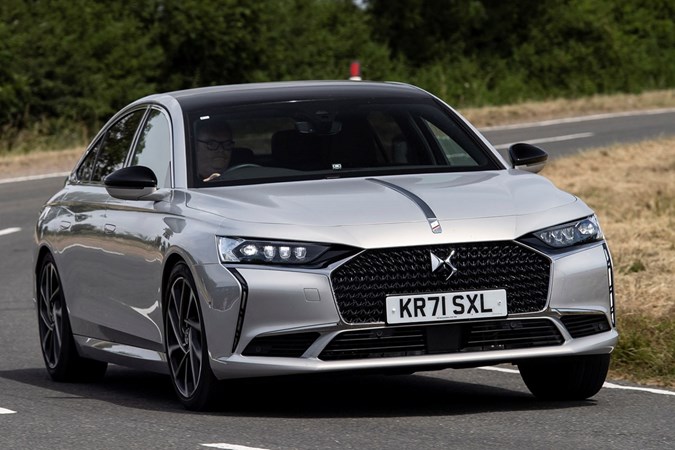The trouble with sports cars is that their suspension can be too firm when you’re just trying to get home at the end of a long day. The trouble with comfy cars is that they can feel like a squidgy blancmange in corners. Either of those will work for some people but not for others. And there are yet other people who like a bit of both, a car whose ride quality can be switched between firm and squidgy at will. That’s where adaptive suspension comes in.
Adaptive suspension allows you to switch between several modes of ride comfort at the touch of a button. How many modes there are varies from car to car but there’s usually at least three called something like Normal, Comfort and Sport.
Sport will be the firmest mode, making the car feel tauter and nimbler in corners. Comfort shifts to the opposite end of the spectrum, softening the suspension to give a smoother ride, though perhaps at the expense of the car’s body moving about more. Normal splits the difference, providing a decent level of comfort without compromising handling too much.
That’s the general principle, but different types of adaptive suspension are used to achieve the effect. Here, we’re going to go over what they are, how they work and what the benefits are. We’ll also consider whether you actually need adaptive suspension.

How does adaptive suspension work?
Before we answer this question, we should go over how car suspension works generally and what determines whether a car has a firm or soft ride.
There are two main elements to a car’s suspension: the spring and the damper (also known as a shock absorber). The damper is the crucial element for ride quality. It’s basically an oil-filled tube with a piston that’s connected to the wheel. The piston moves up and down with the wheel, and the oil resists the movement. A high level of resistance results in a firm ride quality, a low level creates a soft ride.
Adaptive suspension adds electronic control of the resistance to the equation. There are three main versions of system, which we explain below.

Valve-actuated adaptive suspension
In this version of adaptive suspension, a series valves varies the level of resistance provided by the oil in the damper. The ride is firm when the valves are closed and soft when they’re all open. The Dynamic Chassis Control adaptive suspension in high-end Volkswagen models uses this system.
Magnetorheological damping
This Scrabble-special of an adaptive suspension system uses a fluid in the damper that contains metallic particles. When you set the suspension to give a firmer ride, a magnetic charge passes through the damper, increasing the density of the metallic particles and therefore the level of resistance the piston pushes against. Pick a softer ride setting and the magnetic charge turns off. The Magnetic Ride Control fitted to assorted Audi models is one such system.

Adaptive air suspension
Air suspension retains a conventional damper but replaces springs with airbags. It’s a much more versatile form of adaptive suspension because both the resistance in the damper and the pressure in the airbag are electronically controlled which, in theory, gives greater scope for fine-tuning the ride quality.
Adaptive air suspension has other tricks, as well. It can, for instance, keep the car level and at the correct ride height when it’s fully laden. In an SUV like the Land Rover Defender, you can press a button that lifts the car up to provide extra ground clearance when off-roading. And the latest Mercedes S-Class, among others, lifts up slightly when you open the door, to make getting in easier. It can also pump up the suspension on one side to keep the car level through corners.

Other forms of adaptive suspension
There are some other variations on the adaptive suspension theme. For instance, certain models of the DS 9 luxury saloon have Active Scan Suspension which links a camera to the car’s dampers. When the camera picks out a bump or hole in the road, it primes the relevant damper for the impact it’s about to take. That, in theory, reduces the damper’s reaction time and smooths out the ride.
Then there’s the Performance Pack-equipped Polestar 2 which has manually adjustable dampers made by motorsport suspension specialist Öhlins. Adapting the firmness of the dampers to your needs/mood is a bit more involved than pressing a button, however. The rotary knobs that adjust the front dampers are found under the bonnet and the back wheels have to be removed to access the rear dampers.

Is adaptive suspension worth having?
Pretty much every high-end luxury car comes with air suspension, as do a fair few sports cars and even some high-end versions of more mainstream fare. It’s available as an option on a lot of cars, as well.
In some cars, adaptive suspension doesn’t make much of a difference to the driving experience because there’s little variation between the modes. You’ll probably end up leaving it in Normal, which is usually the best compromise between comfort and handling. In other cars, the differences are more pronounced and have more of an effect on how the car feels.
If the car you want happens to come with adaptive suspension, don’t give its value a second thought and experiment with the settings to find the one that works best for you. If you’re contemplating spending a bit extra upgrading a model with adaptive suspension, or ticking the option box for it, endeavour to try the car with and without it to see if you think it’s worth shelling out for.

Which car manufacturers have adaptive suspension?
The vast majority of car manufacturers have an adaptive suspension system that’s available on at least some of its models. Inevitably, each manufacturer applies a brand name to their system. Ford, for instance, calls it Continuously Controlled Damping, Mercedes calls it Active Suspension, and Volvo calls it Four-C Chassis Control.
Looking for more jargon-busting motoring meanings? Head over to our Parkers Car Glossary page and take a look at our other definitions















